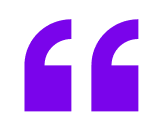Building a product that customers love is a daunting task. It requires a deep understanding of their needs, wants, and pain points. But how do you get that understanding? The key to building successful products is to be data-driven. The more you understand the data, the better products you build.
However, not all data is created equal. There are two main types of data: qualitative and quantitative. As a product leader, it’s important to understand both qualitative and quantitative data. Qualitative data helps you understand the why behind the numbers, while quantitative data helps you measure the impact of your changes.
In this blog post, we’ll explore the differences between qualitative and quantitative data and how to use them together to build better products.
What is Qualitative Data?
Qualitative data is non-numerical data that provides insights into a personal level like people’s thoughts, feelings, and experiences. It can be collected through interviews, surveys, focus groups, and user testing. By listening to users, observing their actions, and empathizing with their problems, product leaders can create products that solve real needs and deliver value.
Qualitative data can help you understand why people use your product, what they like about it, and what they don’t like about it. It can also help you identify new opportunities to improve your product and create new features that customers will love. Eventually generate ideas, test hypotheses, and validate solutions by directly addressing customer needs and exceeding expectations.
Talking about Qualitative data Gloria Folaron, founder of Leantime on LinkedIn said “Collecting and getting qualitative data will also promote customer interviews and discovery. When things get busy, it’s often easy to skip this part — so when you take time to prioritize it, it can really promote a stronger product discovery process.”
What is Quantitative Data?
Quantitative data is numerical data such as usage metrics or poll results that can be measured and analyzed further. It can be collected through product analytics, surveys, and A/B testing.
It can help you understand how people use your product, how often they use it, and what features they use the most. It can also help you track your product’s performance over time and measure the impact of your changes. It is useful for identifying patterns among a broader population of users.
According to Joaquin Azcue, Product Manager at Deloitte Digital “When it comes to quantitative data, what has helped me make sense of it and arrive at meaningful insights, is laying the data points across the different stages of the user-journey. This has allowed me to better understand WHAT is happening, WHERE it’s happening, and WHY it is happening, from the perspective of the user.
For example: If the bounce-back rate is high on the landing screen, we can assume that our value prop is not clear. However, if the bounce-back rate is at the point of conversion/payment flow, we can assume that the cause for it is pricing. Data is always great, but it’s more useful when aligned with the user and its experience!”
Quantitative data is often complex, incomplete, and noisy. It requires product leaders to use appropriate methods and tools to draw conclusions.
Data Collection Methods
Qualitative Data Collection Methods
In-depth Interviews: In-depth interviews are an intimate and highly interactive method of gathering qualitative data. They involve one-on-one conversations with users or potential customers. During these interviews, a skilled moderator delves deep into the participant’s experiences, thoughts, and emotions. This method allows for a rich exploration of the why and how behind user behavior. Through open-ended questions and probing discussions, product leaders can uncover valuable insights and uncover the underlying motivations that drive user actions.
Open-Ended Surveys: Surveys are a versatile tool for collecting qualitative data. While they are more commonly associated with quantitative data, open-ended survey questions can provide valuable qualitative insights. Qualitative surveys allow participants to express their opinions, experiences, and feelings in their own words. These insights can offer a more nuanced understanding of user sentiments and experiences than closed-ended questions.
Focus Groups: Focus groups bring together a small group of participants to discuss a product or concept. This method encourages interaction and group dynamics, which can reveal diverse perspectives and unearth both common and unique pain points. Focus groups are particularly useful for exploring user reactions to new product ideas, gathering initial feedback, and fostering discussions that can lead to innovative solutions.
User Testing: User testing is a hands-on approach to qualitative data collection. It involves observing users as they interact with your product, and providing real-time feedback on its usability, functionality, and overall user experience. By watching users navigate your product, product leaders can pinpoint usability issues, identify frustration points, and gain valuable insights into how users perceive and interact with the product.
Diary Studies: Diary studies are a longitudinal qualitative data collection method. Participants keep journals or logs of their interactions with a product over a specified period. These diaries provide an ongoing narrative of user experiences, enabling product leaders to understand the evolution of user engagement, challenges, and changing needs over time. Diary studies are particularly effective for capturing real-life, day-to-day experiences with a product.
Quantitative Data Collection Methods
Product Analytics: Product analytics tools offer a quantitative lens into user behavior within your product. They track various metrics, including user engagement, feature usage, and conversion rates. This quantitative data provides insights into how users interact with your product, what features are most popular, and where drop-offs occur. It’s an essential tool for continuously monitoring and optimizing your product’s performance.
Fixed Answer Surveys: Surveys can be used for both qualitative and quantitative data collection. When used for quantitative purposes, surveys employ structured questions with predefined answer choices. These surveys are ideal for gathering numerical feedback and metrics on a larger scale. By analyzing survey responses quantitatively, you can identify trends and patterns in user preferences and opinions.
A/B Testing: A/B testing, also known as split testing, is a quantitative method for comparing two or more versions of a product to determine which performs better. It involves randomly assigning users to different variations and measuring their behavior and preferences. A/B testing is an invaluable technique for optimizing elements of your product, such as user interfaces, marketing strategies, and feature sets, based on objective quantitative data.
Web Analytics: Web analytics tools, like Google Analytics, provide quantitative data on website traffic, user demographics, and user paths. This information is instrumental for understanding user behavior on your website, tracking the effectiveness of marketing campaigns, and identifying areas that require improvement. Web analytics can reveal key quantitative metrics such as bounce rates, page views, and conversion rates.
Usage Metrics: Usage metrics encompass a range of quantitative data, including session duration, click-through rates, conversion rates, and more. These metrics provide numerical insights into how users engage with your product. By examining usage metrics, product leaders can pinpoint specific areas of the product that need improvement, track changes over time, and make data-driven decisions regarding feature prioritization and enhancements.
Why You Need Both Quantitative and Qualitative Data
Qualitative and quantitative data – each brings its unique perspective to the table, weaving a comprehensive narrative of customer behavior and preferences. But why do we need both, and how can we blend these seemingly disparate threads of information into a coherent tapestry?
Qualitative data brings empathy into your product decisions, reminding you that behind every data point, there’s a human story waiting to be heard. It helps in exploring the insights into the real-life experiences of your customers and can help in identifying new opportunities to pursue.
On the flip side, quantitative data steps in with its precision and objectivity. It quantifies customer feedback, highlighting patterns and trends that might otherwise remain hidden. It provides the structure, helping you prioritize, measure, and validate your assumptions.
Sergei Shevlyagin, a Software Development Engineer at Zillow, offers a gem of wisdom on balancing both types of data: “Qualitative helps you narrow down on the right questions by understanding what problems the customer is having, what actually matters to them and why. Hard data gets you precise answers to precise questions once you’ve done the narrowing down.”
In essence, qualitative data guides your exploration, steering you toward the right questions, while quantitative data steps in to provide the precise answers you seek. Together, they form a symbiotic relationship, enhancing the depth and accuracy of your insights.
Unlocking Your Product’s Potential with Siam Computing
We’ve seen that the fusion of qualitative and quantitative data is the cornerstone of enlightened product development. As you journey through the realms of human insights and numerical precision, you can witness how these seemingly disparate threads of information come together to create a tapestry of knowledge that propels you toward better products.
At Siam Computing, we understand the importance of this synergy, and we’re here to help you harness the power of data to craft exceptional products that your customers will love. If you’re ready to embark on a data-driven journey towards product excellence, contact us today.
Let’s collaborate and turn your vision into a reality, making products that not only meet customer needs but exceed their expectations. Your success begins with the right data, and we’re here to guide you every step of the way. Let’s build better products together.








